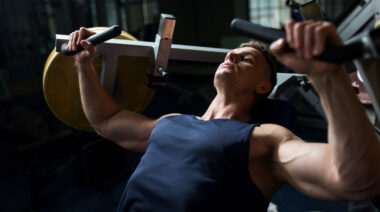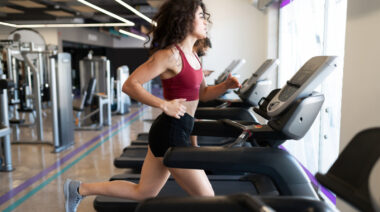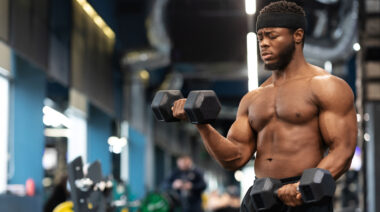Many women participate in sport, but not all have had an active childhood that has given them the fundamental strength and stability necessary to support their adult training. I have found this to be especially true for women starting Brazilian Jiu JItsu. So many women who take up the sport don’t have the strength in their core and upper body to frame and brace, and so end up getting hurt. Women who take a lot of time off with pregnancies or are recovering from a serious injury also find they have to go back to the basics to redevelop their strength in this area.
Many women participate in sport, but not all have had an active childhood that has given them the fundamental strength and stability necessary to support their adult training. I have found this to be especially true for women starting Brazilian Jiu JItsu. So many women who take up the sport don’t have the strength in their core and upper body to frame and brace, and so end up getting hurt. Women who take a lot of time off with pregnancies or are recovering from a serious injury also find they have to go back to the basics to redevelop their strength in this area.
Many female athletes don’t have the strength in their core and upper body to frame and brace as they need to.
Movement Starts at the Core
To begin building this strength, you have to start at the core. Your core muscles connect your upper body and lower body, and all movement patterns originate at the core or move through it. The core dictates how well your arms and legs function and is essential for the balance and stability that prevents falls and injuries. I believe it is essential for all female athletes to incorporate some fundamental strengthening exercises for the core into their training program.
This article is the first in a series will give you progressive exercises for each muscle group to do just that. We’ll begin with a focus on the push up. Core-focused pushing movements are essential to create a strong frame. This strong pushing frame is needed in every sport, from grappling in BJJ, to effective bracing in weight training, or ball sports such as volleyball or tennis. For example, a forehand swing requires an enormous amount of stability. This involves framing through the core while you hit the ball with maximum force using the pushing muscles we are working here.
The seven exercises that follow are a step-by-step guide to increase your pushing strength by working the chest, deltoids, and triceps whilst keeping the core engaged and active. The more advanced exercises incorporate the lats and the rhomboids as well.
7 Core-Strengthening Push Up Progressions
For each exercise, aim to do a total of 20 full repetitions with correct posture, keeping the body straight from head to toe (or head to knees). Remember to activate the abdominals and glutes to keep your spine supported. Perform each push up to the full range of motion, with the chest near to the floor, before progressing to the next exercise.
1. Push Up On Knees
Provided there is a straight line from the head to the knees and the core is activated, this is a great place to start developing upper body strength. The pushing motion activates the pectoralis major, minor, triceps, and anterior deltoids. Your transverse abdominis and erector spinae also stabilise your body weight.
- Lower yourself down so your chest nearly touches the floor and push back up again.
- Once you can perform 20 smooth, steady repetitions from your knees, you can safely progress onto the next exercise.
2. Push Up on Bench/Chair with Single Leg Raise
This movement can be progressed by lowering the level on the bench or chair you are using. As the level lowers, more weight is shifted to the upper body, making the movement more difficult. Raising one leg forces the core to work harder to stabilise and keep symmetrical. The quadriceps, the iliopsoas, erector spinae, and transverse abs also switch on to stabilise the spine. By bending the raised leg at the knee, we also engage the gluteus maximus.
- Aim to do 10 repetitions with one leg raised and 10 with the other raised.
- Ensure that you lower your chest to the chair or bench before pushing back up.
- Engage your abs and glutes to make sure your spine is supported.
3. Standard Push Up
A sign of a weak core is a ‘banana back’, where the back arches and the shoulders sag. This means that the abdominal muscles are not being engaged and the spine is not sufficiently supported. Keep the core activated and strong by ensuring there is a straight line from the head to the feet.
- Make sure you can do at least 20 push ups with good form and a straight shape before progressing to the push up movements on unstable surfaces.
Continue to Page 2 for Advanced Push-Up Progressions >>
4. Push Up on Medicine Ball with One Hand
Push ups with one hand on a medicine ball load your arm unilaterally and force the whole shoulder girdle to stabilise. The uneven surface also forces your core to work overtime to keep your body in a plank position.
- Aim to do 10 repetitions each side while keeping your hips square and level on the medicine ball.
- Once you have mastered this exercise, you are ready to progress to push ups on a physio ball.
5. Push Up on Physio Ball with Single Leg Raise
Performing push ups on a physio ball forces your stabiliser muscles into action. As with the chair or bench push up, raising one leg forces the core to work harder to keep the body symmetrical.
- Aim to do 10 repetitions with one leg raised and 10 repetitions with the other leg raised.
- It’s important to lower your chest to the floor with your shoulders in line with your wrists. There is an inclination to drift backward in this variation, which takes the load off the shoulders. Counter this by engaging the lats to ensure the shoulders remain in line.
6. Push Up on Physio Ball with Crunch
This exercise incorporates the rectus abdominus and the hip flexors.
- Aim to do 20 repetitions.
- Keep your shoulders in line with your wrists and use your pecs, delts, triceps, and lats to stabilise and brace as you bring your knees to your chest.
- Keep your hips low to ensure that you are activating your core. Raising your butt disengages your core and means your hip flexors end up doing all the work.
7. Push Up with Single Arm Dumbbell Rows
This challenging variation incorporates the rhomboids, lats, rear delts, and even the biceps. The supporting arm and core have to work super hard to stabilise as the weight is lifted unilaterally.
- Aim to do 20 repetitions, alternating arms for the rows.
- Lower your chest almost to the floor to ensure maximum range of movement when lowering down for the push up.
- The aim is to perform the single arm row while keeping the plank shape and the hips square.
Be Realistic and Build a Foundation
For some women, expecting to pump out 20 plyometric push ups on a medicine ball might be a little unrealistic at first. Start slow and work your way up to the more challenging exercises. Perform the push up with with a full range of motion, which means chest almost to the floor or to the object you are using to push against. When you can perform 3 sets of 20 repetitions with the right posture and controlled breathing, move onto the following exercise.
Work your way through these pushing movement progressions to build a strong and stable upper body, along with a core that supports it.
More Like This:
- 5 Cutting-Edge Core Training Progressions
- Build a Resilient Spine: Lock Down Core Stability
- How to Restore Strength for Sport Post-Pregnancy
- New on Pulse Beat Fit AU
Photo courtesy of CrossFit Empirical.






